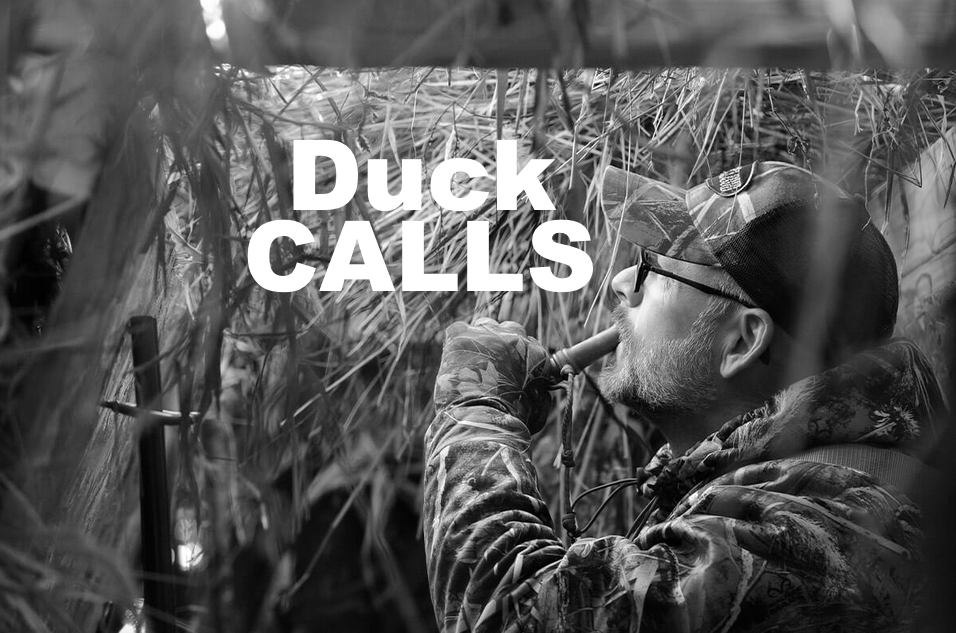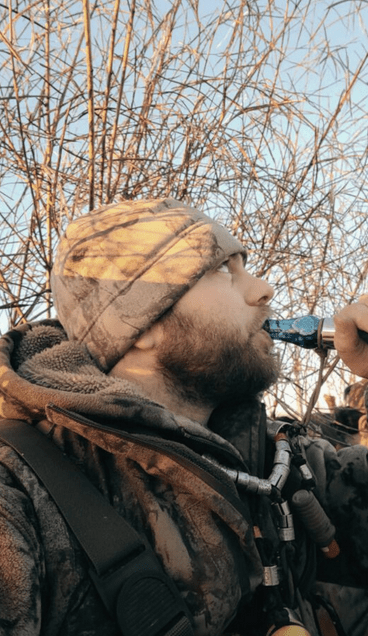This article contains the 8 Duck Calls Every Duck Hunter Must Master this Hunting Season. I usually tell people that the dedicated duck hunter has to master different duck call as a beginner or even a professional. Yes, there are eight types of calls to have in your skill-set.
If you learn these calls, it will help you bring ducks closer in almost every hunting scenario. You can listen to these calls demonstrated by champion caller Greg Brinkley on ducks.org, the creator of Drake Brake Duck Calls in Marion, Arkansas. The 8 Duck Calls every duck hunter must master this hunting season are:
- Basic quack
- Greeting call
- Feed call
- Hail call
- Comeback call
- Lonesome hen
- Pleading call
- Whistling for Mallard, pintail or wigeon
Now, let me explain them to you one after the other for better understanding. But first, you have to see the Affordable Duck Calls to Buy Right Now at Amazon.

1. Basic Quack
As simple as it may seem, some duck callers struggle with getting a basic quack just right. Then, they wonder why the ducks aren’t coming closer to their decoy spread. The basic quack call is the first Duck Calls Every Duck Hunter must master as a beginner.
Todd Heidelbauer emphasizes the importance of not just making the quack but also finishing it properly. He shares wisdom passed down from his grandfather, Frank Heidelbauer, who began making their popular calls back in 1952.
Frank’s advice was clear: make sure your quacks are clean, crisp, and end with a strong “quaCK” rather than a drawn-out “qua qua qua.” Mastering the basics, like ending your quacks, is key, and everything else follows from there. The Heidelbauers certainly know their stuff when it comes to duck calls.
2. Greeting Call
“I like to use the greeting call when I spot ducks from afar,” says Rod Haydel, who is part of Louisiana’s esteemed duck calling family, the Haydels of Haydel’s Game Calls.
He explains that the greeting call is a series of 5 to 7 notes, and they go down in a steady, even rhythm, like this: “Kanc, Kanc, Kanc, Kanc, Kanc.” When it comes to duck calling, Rod Haydel certainly knows his stuff.
3. Feed Call
For a basic feeding call, you can say “tikkitukkatikka” into the call while slightly raising and lowering the volume. Mike McLemore, a three-time World Champion caller and call maker, doesn’t use the feeding call very often. He mentions, “Callers should learn to use it to add variety, but it sounds better to the caller than it does to the ducks.”
Haydel adds his insight, explaining that when he hears most mallards doing a feeding call, it goes in the typical “kitty, kitty, kitty” fashion, and those ducks are usually flying. Ducks that are genuinely feeding, on the other hand, have a more broken up and erratic sound, like “da-dit da-dit dit dit, da-dit dit.” So, understanding when and how to use the feeding call can be valuable for duck hunters.
4. Hail Call
The hail or highball call is something the pros consider overused. Jim Olt from P.S. Olt Company advises, “Don’t use a highball when ducks are within 100 yards of you. But if you do use it, blow it high, hard, and loud. However, only use it if you really know how and when. Highballs are the loudest calls.”
Rod Haydel shares this sentiment, saying, “I’m not a fan of those 30-note hail calls. I’ve never heard a real hen call that way. I aim to sound as natural as possible.” If you do decide to try a hail call, begin with a strong and long “Aaaaaaink…Aaaaaink.., aaaaink, aaainkaink” and then taper it off as you go.
However, it’s crucial to remember to use the hail call sparingly. As Haydel wisely advises, “If the ducks are already coming in, forget about calling.”
5. Comeback Call
The comeback call is handy when ducks don’t react to your greeting call, or when you need a quick response, especially in timber. It’s a bit more urgent and faster, like “Kanckanc, Kanc, Kanc, Kanc,” as explained by Haydel. He also points out, “I’ve observed that real hens usually call to others only after they’ve flown over a pond or moved past their spot. Typically, she gives just one comeback call.”
Olt adds his advice, saying, “Remember, a comeback call should be fast and strong, with about 5 to 7 notes. Don’t make it too complicated.” So, when you need a quick reaction from ducks, the comeback call is the way to go. Practice it because it is among the Duck Calls Every Duck Hunter must master.
6. Lonesome Hen
The lonesome hen call is a bit of a hidden gem and can work really well, especially when ducks are cautious about calls. It’s a simple call, made up of widely spaced, irregular, nasal, and drawn-out Quaaaaink quacks. Some skilled callers have even used it to attract ducks sitting on the water from quite a distance.
Jim Olt advises, “You can create your lonesome hen call starting from your regular quack. Once you master the quack, you can build on that. Your lonesome call should have some space between the quacks and be relatively quick, with several seconds in between. If the quacks are too close together, it can make the ducks nervous.
Note that the lonesome hen call is somewhat low and throaty.” So, when you want to draw in cautious ducks, the lonesome hen call can be your secret weapon.
7. Pleading Call
For you to capture the attention of ducks flying quite high, typically between 75 to 200 yards above, you can use what’s called the pleading or begging hail call.
According to champion caller Greg Brinkley, this call consists of 5 to 6 quacks that are stretched out to sound like you’re practically begging the ducks to land. It goes like this: Kaaanc, Kanc, Kanc, Kanc, with the first note usually held a little longer.
The pleading call is essentially a slow and drawn-out variation of the comeback call. Many callers keep it in reserve for those stubborn ducks that just won’t come in. It’s a way for the caller to literally beg the ducks to come to the decoys or return to the spread.
8. Whistling – Mallard, Pintail or Wigeon
The whistling is another Duck Calls Every Duck Hunter must master. Using whistles can be really effective in duck hunting, as attested by Rod Haydel. He emphasizes their usefulness, especially during late-season hunts when combined with mallard calls. Haydel’s approach is to identify the type of ducks before calling them, enabling him to communicate with them effectively.
Additionally, he points out that whistles can be an excellent way to involve youngsters in hunting because they are relatively easy to use and there’s less room for mistakes. So, don’t overlook the power of a good whistle in your duck hunting toolkit.
Related Posts
- How to Remove a Hickey in Seconds Using Toothpaste
- How to Effectively Increase your Brain Power to Boost Study
- 100 Best White NBA Players in Basket Ball History in Pictures
- Find Your Dream Job Here to Launch Your Career – Future starts
- How Many Grams is in a Pound? Converter Grams, Pounds & Ounces







